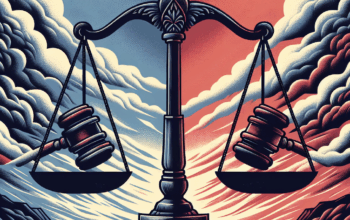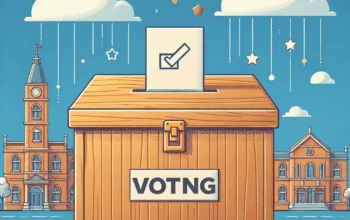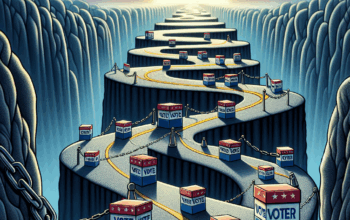Understanding the divide between urban and rural political perspectives is vital in comprehending contemporary American politics. This division has widespread implications for policy-making, political campaigns, and societal perspectives. As the landscape of America evolves, particularly in 2025, it’s crucial to examine the nuanced attitudes and beliefs that characterize urban and rural populations. This article will delve deep into the political perspectives of these two groups, exploring the roots of their differences, the impact of socioeconomic factors, and how these divides shape the future of democracy in America.
Historical Context of Urban and Rural Political Perspectives
The historical context surrounding urban and rural political perspectives is vital to understanding the current landscape. Since the founding of the United States, urban areas have often been viewed as centers of commerce, culture, and innovation. Evolving economies have drawn populations away from rural landscapes toward cities in search of better employment opportunities and improved quality of life. This urban migration has played a decisive role in shaping political ideologies, often leading urban voters to lean towards progressive policies that advocate for social justice, environmental protection, and inclusive social programs.
Conversely, rural areas have historically placed emphasis on self-sufficiency, community cohesion, and individual freedoms. The agrarian lifestyle promotes values such as hard work, tradition, and conservatism. In 2025, this historical perspective continues to influence rural voters, who often prioritize agricultural policies, land rights, and economic stability over issues like climate change or immigration. The political dynamism witnessed in these areas results in a cultural clash when compared to liberal cities, highlighting a divide that has escalated in recent years, particularly during national elections.
The Impact of Socioeconomic Factors on Political Views
Socioeconomic factors play a critical role in shaping the political perspectives of urban and rural populations. Cities, often characterized by high population density and diverse demographics, typically foster a more liberal outlook towards governance. Urban residents are usually more educated and have greater access to resources and services, leading them to advocate for policies aimed at social equity and investment in public infrastructure. In 2025, issues like affordable housing, healthcare access, and education reform remain at the forefront of urban political discourse, resulting in a focus on government solutions.
On the other hand, rural areas face distinct challenges that shape their political views. Economic concerns such as job security, healthcare access, and declining agricultural profits are paramount. The shift away from traditional industries towards automation and digitalization has left many rural communities feeling disenfranchised. Rural voters often support political candidates who promote deregulation and limited government intervention, reflecting their desire for economic freedom and self-governance. Understanding these contrasting socioeconomic conditions is essential for grasping the political sentiments that dominate rural and urban communities in 2025.
Cultural Differences: Values and Identity Politics
Cultural differences between urban and rural areas contribute significantly to the political divide. Urban populations are often seen as more progressive and liberal, embracing diversity, multiculturalism, and social change. In contrast, rural communities tend to uphold traditional values, which can manifest in a resistance to rapid social transformations. In 2025, issues surrounding LGBTQ+ rights, gender equality, and racial justice often find stronger support in urban settings, where demographic diversity fuels a broader acceptance of varied identities and life experiences.
Identity politics is particularly pronounced in urban areas, where intersectionality and representation have become key tenets of political discourse. Advocacy for marginalized communities, be they racial minorities, women, or the LGBTQ+ community, is often a central issue in urban political campaigns. On the other hand, rural communities may feel that their identities are overlooked or marginalized within broader discussions. This perception can lead to a defensive political posture, where rural voters support candidates who emphasize traditional American values and national pride, sometimes at the expense of progress on social issues.
In addition, the rise of social media greatly influences cultural values. While urban residents are generally more engaged with digital platforms for activism and social awareness, rural communities may use these channels to reaffirm their traditions and express dissatisfaction with mainstream narratives. This duality further exacerbates the divide as both sides become entrenched in their beliefs and insulated from opposing viewpoints.
Political Strategies and Campaign Approaches
Political strategies vary significantly between urban and rural campaigns, reflecting the different priorities of these electorates. Urban campaigns in 2025 often focus on issues such as housing stability, public transit, climate action, and social equity. Candidates tend to utilize data analytics to target younger, more diverse demographics, often prioritizing digital outreach and social media engagement. Grassroots movements and community organizing are also prevalent in urban areas, where diverse coalitions can mobilize quickly around issues that resonate with the electorate.
In contrast, rural political campaigns frequently lean on direct, grassroots interactions. Town halls, community meetings, and door-to-door canvassing are standard practices to engage isolated voters. Candidates in rural constituencies typically emphasize local issues such as agricultural policy, broadband access, and healthcare availability, presenting themselves as advocates for the community rather than part of a larger political machine. This localized approach allows candidates to establish personal connections with voters, which can be critical in areas often overlooked by national campaigns.
Moreover, as political polarization intensifies, strategies have become more focused on portraying opponents in stark contrast. In urban areas, candidates may emphasize progressive platforms as a moral imperative, while rural candidates often frame their campaigns around preservation and traditional values. This tactic has significant implications for voter turnout, as urban voters may feel compelled to mobilize for progressive change, whereas rural voters may rally defensively to protect their way of life.
The Future of Urban and Rural Political Dynamics
As we look toward the future, the dynamic between urban and rural political perspectives presents both challenges and opportunities for American democracy. The increasing polarization observed in recent years necessitates new strategies for fostering dialogue and cooperation across political divides. Solutions may involve more participatory governance models that encourage collaboration between urban and rural communities, fostering a shared understanding of each region’s unique challenges.
Educational initiatives could play a pivotal role in bridging the divide. Promoting civic education that includes understanding different political perspectives might help dismantle stereotypes and facilitate constructive conversations about common issues. In 2025, this focus could pave the way for a more empathetic political climate where rural and urban residents can appreciate the complexities of each other’s lives.
Lastly, addressing the economic disparities that fuel urban-rural tensions can foster more equitable policies that benefit both communities. Investments in rural development, infrastructure, and education must focus on leveling the playing field, providing equal opportunities irrespective of geographic location. This commitment to equity is essential for a united political landscape, helping to ensure that all voices are heard and respected in the ongoing democratic dialogue.
Conclusion
In conclusion, understanding the divide between urban and rural political perspectives requires a nuanced appreciation of historical, socioeconomic, cultural, and strategic factors. The divergence is not merely a political issue but a reflection of deeply held values and identities. As America moves through 2025, both urban and rural communities must seek common ground while respecting their differences. Emphasizing dialogue, collaboration, and equitable policy solutions will be vital in shaping a more inclusive democracy, enabling all Americans to thrive, regardless of their geographic affiliation.
What are the main differences in political perspectives between urban and rural voters?
Urban voters tend to lean more liberal, focusing on issues like social equity, climate change, and public welfare. Rural voters often prioritize economic stability, tradition, and limited government intervention, leading to a more conservative political stance.
How do socioeconomic factors influence political beliefs in urban and rural areas?
In urban areas, higher education levels and diverse demographics generally promote progressive beliefs, while rural areas, often facing economic challenges and valuing self-sufficiency, lean toward conservative ideologies focused on preserving traditional values and economic freedom.
What role does culture play in shaping political attitudes?
Cultural differences contribute to distinct political attitudes, with urban populations embracing diversity and progressive values, while rural communities place higher importance on tradition and community cohesion, influencing their support for specific policies and candidates.
How can political strategies differ between urban and rural campaigns?
Urban campaigns often leverage digital outreach and grassroots organizing to engage younger, diverse voters, focusing on progressive issues. In contrast, rural campaigns prioritize personal connections and engage voters through local events, focusing on community-specific concerns.
What does the future look like for urban and rural political dynamics?
The future of urban and rural political dynamics lies in fostering dialogue, understanding, and equitable solutions to address the socioeconomic and cultural challenges faced by both communities. Engaging in collaborative governance and education can promote a more inclusive political landscape and strengthen democracy.












